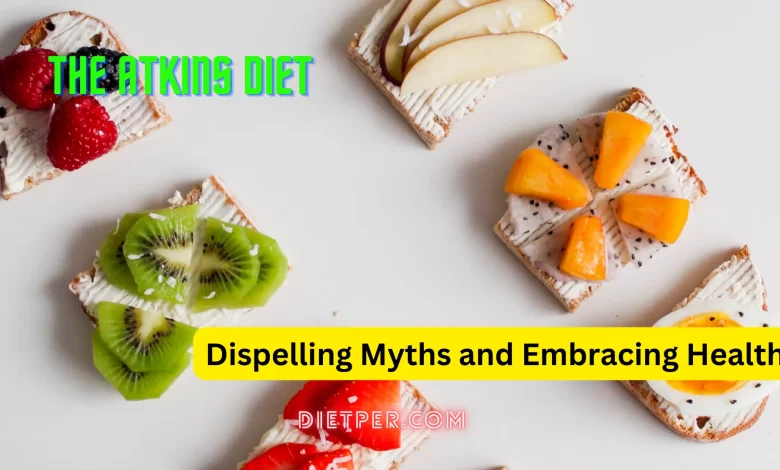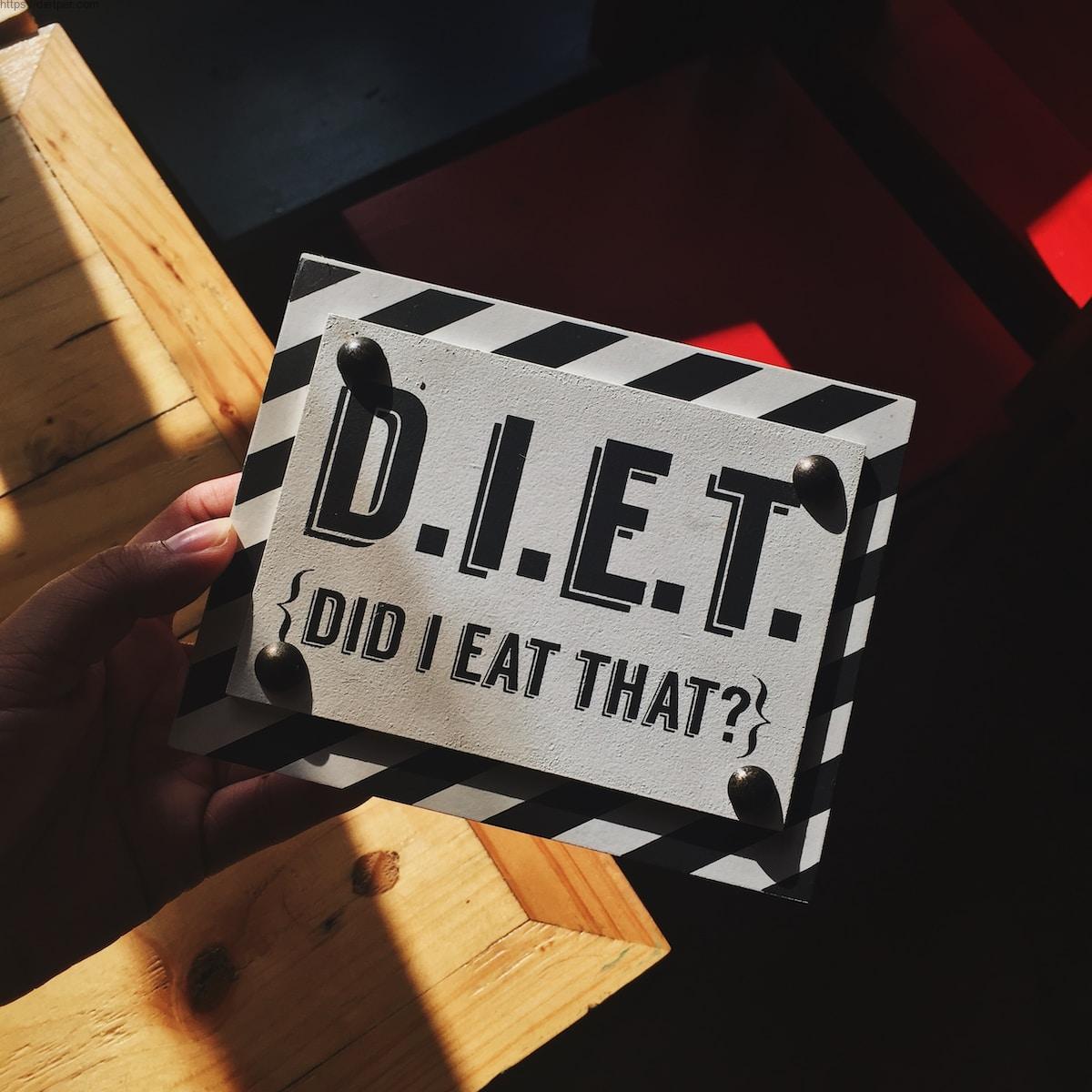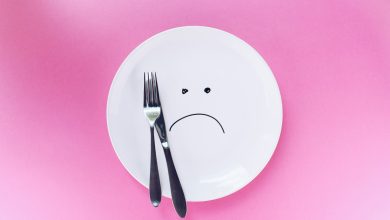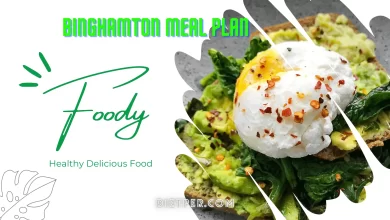The Atkins Diet: Dispelling Myths and Embracing Health
Atkins Diet Pros and Cons: Is It Right for Your Weight Loss Journey?

The Atkins Diet is one of the most popular diets in the world, having helped millions of people lose weight and improve their health. However, there are many myths and misconceptions surrounding this diet that often prevent people from giving it a try. Some people believe that the Atkins Diet is simply a fad diet that will make them gain weight in the long run, while others are concerned that the high-fat content of the diet will lead to heart disease or other health problems.
The Atkins Diet and its popularity
The Atkins Diet, pioneered by Dr. Robert Atkins in the 1970s, has become a prominent and widely discussed dietary approach, garnering both praise and skepticism. Its core premise centers on reducing carbohydrate consumption while elevating protein and healthy fat intake. This carb restriction compels the body into a state of ketosis, where it relies on fat for energy instead of glucose, facilitating rapid weight loss and heightened energy levels.
The diet’s popularity can be attributed to its reputation for delivering swift and motivating results. Many individuals have experienced significant initial weight loss, which serves as a strong incentive for adherence. Additionally, the Atkins Diet offers a broad spectrum of food options, enhancing its sustainability compared to more rigid dietary regimens.
Nonetheless, the diet has faced criticism due to potential health risks and questions surrounding its long-term viability. Detractors argue that the consumption of saturated fats and cholesterol from animal-based sources may elevate the risk of heart disease and other health issues. Moreover, the diet’s restrictive nature can lead to nutrient deficiencies unless closely monitored and balanced.
What to Eat
Protein Sources: Include plenty of lean protein in your diet. Good options include:
-
- Beef
- Pork
- Poultry (chicken, turkey, duck)
- Fish (salmon, trout, sardines)
- Shellfish (shrimp, crab, lobster)
- Eggs
Healthy Fats: Incorporate healthy fats into your meals:
-
- Olive oil
- Coconut oil
- Avocado oil
- Butter (in moderation)
- Nuts (almonds, walnuts, etc.)
- Seeds (flaxseeds, chia seeds, etc.)
- Avocados
Non-Starchy Vegetables: Consume plenty of non-starchy vegetables, which are low in carbohydrates and high in fiber and nutrients. Examples include:
-
- Spinach
- Kale
- Broccoli
- Cauliflower
- Lettuce
- Zucchini
- Bell peppers
Dairy: Enjoy full-fat dairy products in moderation, such as:
-
- Cheese (preferably full-fat)
- Cream
- Sour cream
- Greek yogurt (unsweetened)
Low-Carb Sweeteners: If desired, use low-carb sweeteners sparingly. Options include:
-
- Stevia
- Erythritol
- Xylitol (use caution, as it can have laxative effects)
Beverages: Stay hydrated with water, herbal teas, and black coffee (in moderation).
What to Avoid
High-Carb Foods: Avoid or severely limit foods high in carbohydrates, including:
-
- Bread
- Pasta
- Rice
- Cereals
- Grains
- Sugary snacks
- Candy
- Soda
Sugars: Eliminate or drastically reduce sugar intake, including:
-
- Desserts
- Sugary beverages
- Pastries
- Fruit juices
Starchy Vegetables: Restrict consumption of starchy vegetables, such as:
-
- Potatoes
- Corn
- Peas
- Carrots
Fruits: In the initial phases, limit fruit intake to small amounts of berries. As you progress, you can gradually reintroduce other fruits in moderation.
Legumes: Avoid legumes like beans, lentils, and peas, which are high in carbohydrates.
Processed Foods: Steer clear of highly processed and packaged foods that often contain hidden sugars and unhealthy fats.
Grains: Eliminate grains like wheat, barley, and oats from your diet.
Atkins sample meals / Modified Atkins diet meal plan
The Atkins diet is a low-carb, high-fat diet that involves reducing your carbohydrate intake to promote weight loss and improve overall health. Here are some Atkins sample meals / Modified Atkins diet meal plan for the Atkins diet at different phases:
Atkins menu plan Phase 1: Induction (20-25 grams of net carbs per day)
During week 1 Atkins diet plan phase / Atkins meal plan for 7 days, you aim to kickstart ketosis, a state in which your body burns fat for fuel instead of carbohydrates.
- Breakfast:
- Scrambled eggs with spinach and cheese cooked in butter.
- Sliced avocado on the side.
- Lunch:
- Grilled chicken breast with a side of steamed broccoli and a Caesar salad (dressing made with olive oil and no croutons).
- Dinner:
- Baked salmon with a lemon butter sauce.
- Asparagus roasted in olive oil and garlic.
- Snack:
- Handful of mixed nuts (e.g., almonds, walnuts) or celery sticks with cream cheese.
Phase 2: Balancing (25-50 grams of net carbs per day)
In this phase, you can gradually increase your carb intake while continuing to lose weight.
- Breakfast:
- Greek yogurt with berries and a drizzle of honey (keep an eye on the carb count in the yogurt).
- Lunch:
- Turkey and cheese roll-ups with lettuce and mayo.
- A small side salad with ranch dressing.
- Dinner:
- Grilled steak with sautéed mushrooms and a side of cauliflower mash (mashed cauliflower with butter and cream).
- Snack:
- Cottage cheese with chopped cucumber and cherry tomatoes.
Phase 3: Pre-Maintenance (50-80 grams of net carbs per day)
As you approach your goal weight, you can add more carbs to your diet.
- Breakfast:
- Omelette with mushrooms, bell peppers, and cheese.
- A small serving of mixed berries.
- Lunch:
- Tuna salad made with mayonnaise, celery, and pickles, served in lettuce wraps.
- Dinner:
- Grilled shrimp with a side of sautéed spinach and a small serving of quinoa.
- Snack:
- A piece of dark chocolate (70% cocoa or higher) or a few cherry tomatoes with mozzarella cheese.
Atkins one week meal plan / Atkins induction diet menu plan
Atkins one week meal plan is designed for individuals in the initial phase, Induction, which restricts daily net carbohydrate intake to approximately 20-25 grams.
Day 1
Breakfast
- Scrambled eggs with butter, spinach, and feta cheese.
- Sliced avocado for added healthy fats and fiber.
Lunch
- Grilled chicken breast, accompanied by steamed broccoli.
- Caesar salad sans croutons, dressed with a Caesar dressing made from olive oil.
Dinner
- Baked salmon with a delectable lemon butter sauce.
- Roasted asparagus, gently seasoned with olive oil and garlic.
Day 2
Breakfast
- An omelette brimming with diced bell peppers, onions, and cheddar cheese.
- A handful of cherry tomatoes for a touch of freshness.
Lunch
- A tantalizing tuna salad composed of mayonnaise, celery, and pickles, presented in lettuce wraps.
- A side salad featuring ranch dressing.
Dinner
- A succulent grilled steak served alongside sautéed mushrooms.
- Creamy mashed cauliflower, enriched with butter and cream.
Day 3
Breakfast
- Greek yogurt adorned with a few fresh raspberries and a drizzle of honey (keeping an eye on yogurt’s carb content).
Lunch
- Turkey and cheese roll-ups encased in crisp lettuce leaves, complemented by mayonnaise.
- A vinaigrette-dressed side salad.
Dinner
- Grilled shrimp combined with sautéed spinach.
- A modest portion of quinoa for a subtle carbohydrate addition.
Day 4
Breakfast
- Scrambled eggs teamed up with diced ham and Swiss cheese.
- Sliced cucumber for a refreshing crunch.
Lunch
- Chicken salad, amalgamated with mayonnaise, diced celery, and almonds, presented within lettuce cups.
- A side of raw baby carrots for added texture and nutrients.
Dinner
- Roasted pork tenderloin, seasoned with rosemary and garlic.
- Steamed broccoli drizzled with a delicate olive oil and lemon dressing.
Day 5
Breakfast
- A smoothie made from unsweetened almond milk, spinach, protein powder, and a tablespoon of almond butter.
- A dash of cinnamon for flavor.
Lunch
- Sliced roast beef, rolled up with cream cheese and sliced green bell peppers.
- A side salad topped with a generous pour of olive oil and vinegar dressing.
Dinner
- Baked chicken thighs seasoned with paprika and thyme.
- Sautéed zucchini cooked in butter and garlic.
Day 6
Breakfast
- A vegetable frittata prepared with bell peppers, onions, tomatoes, and eggs.
- Sliced avocado as an accompaniment.
Lunch
- A spinach and bacon salad tossed in a creamy ranch dressing.
- Deviled eggs filled with a mixture of mayo and mustard.
Dinner
- Grilled swordfish with a squeeze of fresh lemon.
- Steamed green beans lightly seasoned with olive oil and crushed red pepper flakes.
Day 7
Breakfast
- Cottage cheese served with sliced strawberries.
- A sprinkle of chopped nuts for added texture.
Lunch
- Sliced turkey and Swiss cheese, rolled up with mustard.
- A side of mixed greens with balsamic vinaigrette.
Dinner
- Beef stir-fry with assorted low-carb vegetables, cooked in soy sauce and sesame oil.
- Cauliflower rice as a delicious, carb-restricted alternative.
Atkins diet list of foods
The Atkins Diet is divided into several phases, each with different food restrictions and recommendations. Below, I’ll provide a list of foods that are typically allowed in the various phases of the Atkins Diet:
Phase 1: Induction
This phase is the most restrictive and aims to induce ketosis by limiting daily net carb intake to around 20-25 grams. Foods allowed include:
Protein Sources:
-
- Beef
- Pork
- Poultry (chicken, turkey, duck)
- Fish (salmon, trout, sardines)
- Shellfish (shrimp, crab, lobster)
- Eggs
Fats and Oils:
-
- Butter
- Olive oil
- Coconut oil
- Avocado oil
Low-Carb Vegetables:
-
- Spinach
- Kale
- Broccoli
- Asparagus
- Cabbage
- Lettuce
- Radishes
- Celery
Dairy (in moderation):
-
- Cheese (preferably full-fat)
- Cream
- Sour cream
- Greek yogurt (unsweetened)
Herbs, Spices, and Seasonings:
-
- Salt
- Pepper
- Garlic
- Basil
- Oregano
- Thyme
- Paprika
- Other herbs and spices
Phase 2: Balancing (Ongoing Weight Loss)
During this phase, you gradually add more carbohydrates back into your diet while still losing weight. Foods from Phase 1 are still allowed, and you can introduce the following:
Nuts and Seeds (in moderation):
-
- Almonds
- Walnuts
- Sunflower seeds
Berries (in moderation):
-
- Strawberries
- Blueberries
- Raspberries
More Vegetables:
-
- Tomatoes
- Bell peppers
- Onions (in moderation)
Phase 3: Pre-Maintenance
In this phase, you continue to increase your daily carb intake. You can introduce more variety, including:
Fruits (in moderation):
-
- Apples
- Pears
- Melons
- Citrus fruits (oranges, grapefruits)
Legumes (in moderation):
-
- Black beans
- Chickpeas
- Lentils
Phase 4: Maintenance
This is the phase you enter once you’ve achieved your desired weight. It’s all about maintaining your weight and a healthy lifestyle. You can continue to enjoy a variety of foods, including whole grains, starchy vegetables, and fruits, while monitoring your carbohydrate intake to prevent weight gain.
Remember that the Atkins Diet emphasizes whole, unprocessed foods and encourages you to avoid added sugars and highly processed items.
3 Amazing Diets
- 40 Daniel Fast Foods
- How The 2468 Diet That Has Changed My Life
- The Spartan Agoge Diet: Fueling the Warrior Spirit
Atkins Diet meal ideas
Grilled Chicken Caesar Salad:
-
- Grilled chicken breast on a bed of romaine lettuce with Caesar dressing (low-carb version) and grated Parmesan cheese.
Bunless Burger:
-
- A juicy beef patty topped with cheese, lettuce, tomato, onion, and pickles, served without the bun.
Stuffed Bell Peppers:
-
- Bell peppers filled with a mixture of ground turkey, cauliflower rice, diced tomatoes, and cheese.
Zucchini Noodles with Pesto and Shrimp:
-
- Spiralized zucchini noodles tossed in pesto sauce and sautéed shrimp.
Eggplant Parmesan:
-
- Slices of eggplant coated in almond flour and Parmesan cheese, baked with marinara sauce and mozzarella.
Cauliflower Crust Pizza:
-
- Homemade pizza with a cauliflower crust topped with low-carb tomato sauce, cheese, and your favorite toppings.
Salmon and Asparagus Foil Packets:
-
- Salmon fillets and asparagus spears drizzled with olive oil, lemon juice, and seasonings, wrapped in foil and baked.
Spinach and Feta Stuffed Chicken Breast:
-
- Chicken breasts stuffed with sautéed spinach and feta cheese, then baked to perfection.
Mexican Cauliflower Rice Bowl:
-
- Cauliflower rice mixed with ground beef or turkey, taco seasoning, avocado, salsa, and sour cream.
Omelette with Avocado and Smoked Salmon:
-
- A fluffy omelette filled with diced avocado and smoked salmon, seasoned with dill and chives.
Addressing Common Concerns and Clarifying Misconceptions about the Atkins Diet
The Atkins Diet has long been a topic of discussion, accompanied by its fair share of concerns and misconceptions. In this section, we aim to tackle prevalent worries and dispel myths surrounding this renowned low-carb dietary approach.
Misconception 1: The Atkins Diet Promotes Unhealthy Saturated Fat Intake
Contrary to the belief that the Atkins Diet encourages excessive consumption of saturated fats, it actually prioritizes healthy fats. These include fats found in nutrient-rich foods like avocados, nuts, and olive oil, while discouraging the intake of trans fats and processed foods.
Misconception 2: The Diet Lacks Essential Nutrients
While the Atkins Diet restricts carbohydrates in its initial phases, it compensates by emphasizing the consumption of diverse nutrient-packed foods. These include a plethora of vegetables, lean proteins, and healthy fats. Additionally, dietary supplements are encouraged to address potential nutrient gaps.
Misconception 3: The Diet Harms Heart Health
Concerns about the Atkins Diet negatively affecting cholesterol levels or increasing heart disease risk are unfounded. Numerous studies have demonstrated that this dietary approach often leads to improved cholesterol profiles, including increased levels of HDL (beneficial) cholesterol and decreased triglycerides, well-established heart disease risk factors.
Misconception 4: The Diet Is Too Restrictive and Unsustainable
While the initial phases of the Atkins Diet do involve significant carbohydrate reduction, its later phases allow for gradual carbohydrate reintroduction. This adaptability makes it more flexible and accommodating to individual preferences. Moreover, the diet encourages the adoption of healthier eating habits, such as choosing whole, unprocessed foods and avoiding refined carbohydrates and sugars, which can lead to enduring improvements in overall health and sustainable weight management.
Frequently Asked Questions
1. Why Atkins Diet Is Bad for You?
The Atkins Diet can pose health risks if followed without proper guidance. It may lead to nutrient deficiencies, heart health concerns due to high saturated fat intake, and potential kidney strain. Always consult a healthcare professional before starting any diet.
2. Who Invented Atkins Diet?
Dr. Robert Atkins, a cardiologist, developed the Atkins Diet in the early 1970s.
3. How Much Does Atkins Diet Cost?
The cost of following the Atkins Diet varies widely, as it depends on factors like food choices, supplements, and whether you seek guidance from a dietitian or purchase specialized products. It can range from affordable to more expensive, depending on individual preferences.
4. What Is Eco Atkins Diet?
The Eco-Atkins Diet is a plant-based variation of the Atkins Diet, focusing on plant proteins and healthy fats while reducing carbohydrates. It incorporates sources like tofu, tempeh, and nuts.
5. How Long Does the Atkins Diet Last?
The duration of the Atkins Diet varies from person to person and depends on individual goals. It can range from a few weeks to several months or longer. Some individuals adopt a modified version for long-term maintenance.
6. Where Did the Atkins Diet Originate?
The Atkins Diet originated in the United States when Dr. Robert Atkins introduced it in the early 1970s.
7. Where Are Atkins Products Made?
Atkins products are typically produced by various manufacturers and can vary in origin. It’s advisable to check product labels for manufacturing information.
Final Thoghts
The Atkins Diet can be a viable option for individuals looking to lose weight and improve their blood sugar control. However, it is essential to approach it with moderation, individualization, and a focus on overall dietary quality. By understanding the reality of the Atkins Diet and its potential benefits, individuals can make informed decisions about their dietary choices and work towards achieving their health goals.
Disclaimer
This blog post aims to empower you to make informed and health-conscious food choices. Your well-being is of paramount importance, and it’s essential to prioritize your health before embarking on any restrictive diets. Therefore, if you have any concerns, it is highly advisable to seek guidance from a healthcare professional or registered dietitian before making dietary changes.





